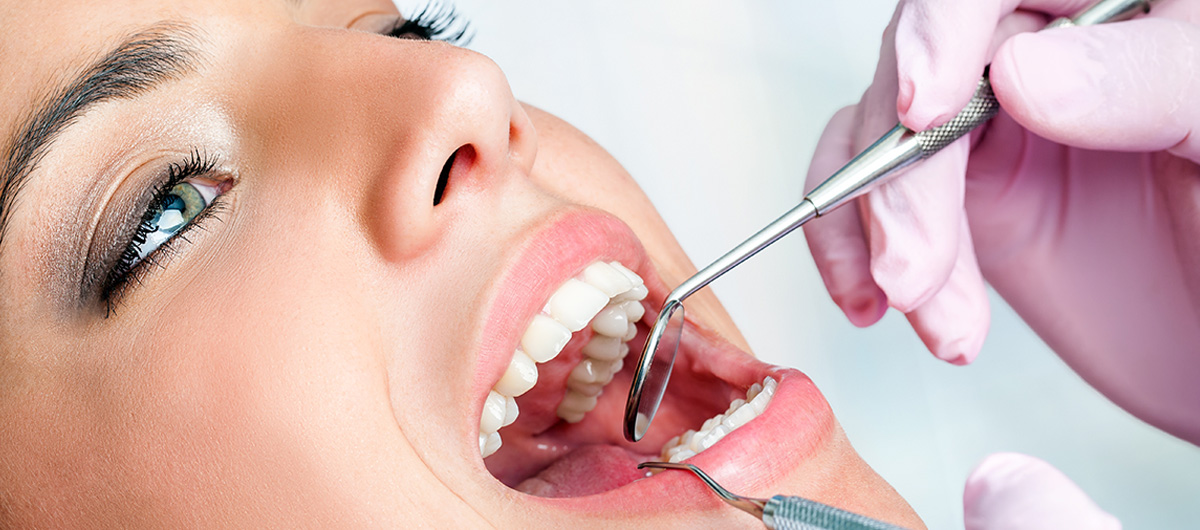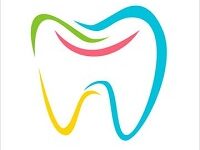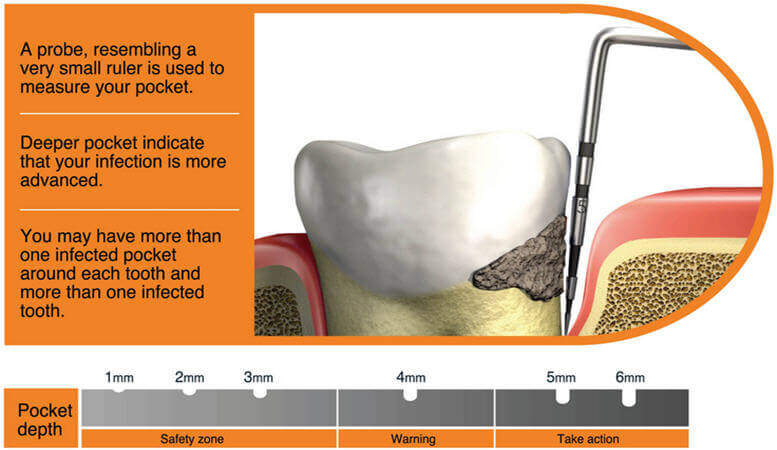Non-Surgical Periodontal Treatments: What Are Your Options?
They say prevention is better than cure, and when it comes to periodontal treatments, this adage holds true. But what if you find yourself in need of treatment? What are your options?
Well, you’ll be glad to know that there are non-surgical options available to help you restore your gum health. From scaling and root planing to laser therapy, antibiotic therapy to deep cleaning procedures, this discussion will explore the various treatments that can help you combat periodontal disease without the need for surgery.
So, if you’re looking for effective solutions to address your gum problems, keep reading to discover the options that could make a real difference for you.
Scaling and Root Planing
Scaling and root planing is a non-surgical periodontal treatment that actively removes plaque and tartar from the teeth and roots, promoting healthier gums. If you have been diagnosed with gum disease, your dentist may recommend this procedure to help restore the health of your gums.
During scaling, your dentist will use special tools to remove the plaque and tartar that have built up on the surfaces of your teeth and below the gumline. This process helps to eliminate the bacteria that cause gum inflammation and infection.
Root planing, on the other hand, involves smoothing out the rough surfaces of the tooth roots to prevent bacteria from reattaching to them. By removing the plaque and tartar and smoothing the tooth roots, scaling and root planing can promote the healing of your gums and prevent further progression of gum disease.
This procedure is usually performed in multiple visits, with each visit focusing on a different section of your mouth. It may be done under local anesthesia to ensure your comfort during the procedure.
After scaling and root planing, it’s important to maintain good oral hygiene practices, such as regular brushing and flossing, to keep your gums healthy. Your dentist may also recommend more frequent dental cleanings to prevent the recurrence of gum disease.
Antibiotic Therapy
If you have undergone scaling and root planing for gum disease, your dentist may recommend antibiotic therapy as a supplementary treatment to further promote healing and prevent bacterial re-infection. Antibiotic therapy involves the use of medications to target and eliminate the bacteria causing the gum disease. These medications can be prescribed as pills, mouth rinses, gels, or as a direct application to the affected areas.
The goal of antibiotic therapy is to reduce the number of harmful bacteria in your mouth and control the infection. By doing so, it helps to prevent the progression of gum disease and promote healing of the gum tissues. Antibiotics work by killing the bacteria or inhibiting their growth, depending on the type of medication prescribed.
It is important to note that antibiotic therapy is typically used in combination with other non-surgical treatments, such as scaling and root planing, to achieve optimal results. Your dentist will determine the most appropriate antibiotic and dosage based on the severity of your gum disease and your overall health.
While antibiotic therapy can be an effective tool in the treatment of gum disease, it’s important to follow your dentist’s instructions and finish the prescribed course of medication. This will help to ensure that the infection is fully eliminated and reduce the risk of bacterial re-infection. Additionally, maintaining good oral hygiene practices, such as brushing twice a day and flossing regularly, is crucial for long-term gum health.
Laser Therapy
Laser therapy is a modern and minimally invasive treatment option for gum disease. With the use of a concentrated beam of light, this innovative technique can effectively target and eliminate bacteria and infected tissue, promoting gum health and improving overall oral hygiene.
Here are four key aspects of laser therapy that make it a valuable tool in combating gum disease:
1. Precision: The laser can be precisely directed to the affected areas, allowing for targeted treatment without damaging the surrounding healthy tissue.
2. Reduced discomfort: Laser therapy is generally less painful compared to traditional gum disease treatments. The laser energy cauterizes blood vessels and nerve endings, resulting in less bleeding and minimal post-treatment discomfort.
3. Faster healing: The laser stimulates cell growth and accelerates the healing process. This means that recovery time is often shorter, and patients can resume their normal activities sooner.
4. Minimally invasive: Laser therapy requires no incisions or sutures, making it a minimally invasive alternative to traditional gum surgery. This reduces the risk of infection and allows for quicker healing.
Dental Cleanings
When it comes to maintaining optimal gum health, regular dental cleanings are an essential part of your oral hygiene routine. These cleanings, also known as prophylaxis, are typically performed by a dental hygienist. During a dental cleaning, the hygienist will use specialized tools to remove plaque and tartar buildup from your teeth and gums. They’ll also polish your teeth to remove stains and leave them feeling smooth and clean.
Regular dental cleanings are important because they help prevent gum disease and tooth decay. Even with proper brushing and flossing at home, it can be difficult to remove all of the plaque and tartar that can accumulate on your teeth. Over time, this buildup can lead to inflammation of the gums and eventually gum disease. Dental cleanings can help remove this buildup and keep your gums healthy.
In addition to preventing gum disease, dental cleanings can also help improve your overall oral health. During the cleaning, the hygienist will examine your mouth for any signs of oral health issues, such as cavities or gum disease. They can also provide you with tips and recommendations for improving your oral hygiene routine at home.
To maintain optimal gum health, it’s recommended to have a dental cleaning every six months. However, your dentist may recommend more frequent cleanings if you’re at a higher risk for gum disease or have other oral health concerns. By making dental cleanings a regular part of your oral hygiene routine, you can help keep your gums healthy and prevent oral health problems in the future.
Deep Cleaning Procedures
Deep cleaning procedures, also known as scaling and root planing, are a crucial treatment option for individuals with gum disease. These procedures are performed by a dental professional to remove plaque and tartar build-up below the gumline and smooth the root surfaces of the teeth.
Here are four steps involved in deep cleaning procedures:
1. Assessment: Your dentist will evaluate the extent of your gum disease and determine the areas that require treatment. They’ll measure the depth of your gum pockets using a small probe.
2. Scaling: Using specialized instruments, your dentist will carefully remove the plaque and tartar from the tooth surfaces and below the gumline. This process helps eliminate the bacteria responsible for gum disease.
3. Root Planing: After scaling, your dentist will smooth out the rough areas on the roots of your teeth. This step helps the gums reattach to the roots and prevents further plaque accumulation.
4. Follow-up Care: Your dentist may prescribe antibiotics or antimicrobial mouth rinses to control infection and promote healing. They’ll also schedule regular check-ups to monitor your progress and ensure the effectiveness of the treatment.
Deep cleaning procedures are an effective way to treat gum disease and prevent its progression. By following proper oral hygiene practices and attending regular dental visits, you can maintain healthy gums and teeth.
Maintenance Therapy
Now let’s talk about the benefits of maintenance therapy and the frequency of maintenance visits.
Maintenance therapy plays a crucial role in keeping your gums healthy and preventing the progression of gum disease. Regular visits for maintenance therapy help to monitor your oral health, remove plaque and tartar buildup, and address any emerging issues before they become more serious.
It’s important to understand the importance of regular maintenance visits to maintain optimal oral hygiene.
Benefits of Maintenance Therapy
Regular maintenance therapy is essential for maintaining the health and stability of your gums and overall oral health. Here are four benefits you can expect from this crucial treatment:
1. Prevention of plaque and tartar buildup: Regular maintenance therapy helps remove plaque and tartar that can accumulate on your teeth and gums. This prevents the development of gum disease and reduces the risk of tooth decay.
2. Early detection of oral health issues: During maintenance therapy, your dentist or dental hygienist will thoroughly examine your mouth for any signs of gum disease or other oral health problems. This allows for early detection and prompt treatment, preventing further damage to your gums and teeth.
3. Improved gum health: Maintenance therapy includes professional cleaning and scaling, which helps remove bacteria and toxins from your gums. This promotes healthier gum tissue and reduces inflammation and bleeding.
4. Long-term preservation of your natural teeth: By maintaining the health of your gums and teeth through regular maintenance therapy, you can significantly increase the longevity of your natural teeth. This means fewer dental procedures, reduced risk of tooth loss, and better overall oral health.
Frequency of Maintenance Visits
During your ongoing maintenance therapy, it’s important to schedule regular visits to ensure the continued health and stability of your gums and overall oral health. These maintenance visits play a crucial role in preventing the progression of periodontal disease and maintaining the results of your non-surgical treatments.
The frequency of these visits may vary depending on your individual needs and the severity of your condition. In general, most patients will be advised to visit their dental professional every three to four months.
These frequent visits allow your dentist or dental hygienist to closely monitor your gum health, remove any plaque or tartar buildup, and address any potential issues before they worsen. By staying consistent with your maintenance visits, you can greatly improve the long-term success of your non-surgical periodontal treatments and maintain a healthy smile.
Frequently Asked Questions
How Long Does the Recovery Process Take After Scaling and Root Planing?
The recovery process after scaling and root planing is different for everyone. It can take a few days to a few weeks for your gums to fully heal. During this time, it’s important to follow your dentist’s instructions for proper oral hygiene and take any prescribed medications.
Be gentle when brushing and flossing to avoid irritating the treated area. If you experience any excessive bleeding or pain, contact your dentist for further guidance.
Are There Any Side Effects or Risks Associated With Antibiotic Therapy for Periodontal Disease?
There may be some side effects and risks associated with antibiotic therapy for periodontal disease. These can include gastrointestinal upset, allergic reactions, and the potential for developing antibiotic resistance.
It’s important to discuss any concerns or medical history with your dentist or periodontist to ensure that antibiotic therapy is the right treatment option for you. They’ll be able to provide you with more information and guidance on the potential side effects and risks specific to your situation.
Can Laser Therapy Be Used as a Standalone Treatment for Periodontal Disease, or Does It Need to Be Combined With Other Treatments?
Laser therapy can be used as a standalone treatment for periodontal disease. It can help remove infected tissue and promote gum healing. However, it is often more effective when combined with other treatments.
Combining laser therapy with other non-surgical treatments like scaling and root planing can provide more comprehensive results.
Your dentist will evaluate your specific case and recommend the best treatment options for you.
How Often Should Dental Cleanings Be Scheduled for Someone With Periodontal Disease?
For someone with periodontal disease, it’s important to schedule regular dental cleanings. These cleanings help remove plaque and tartar buildup that contribute to the disease.
The frequency of cleanings may vary depending on the severity of your condition. Your dentist will be able to determine how often you should have cleanings to maintain your oral health.
Regular cleanings, along with proper at-home oral hygiene, can help control the progression of periodontal disease and keep your gums healthy.
Is Maintenance Therapy a Lifelong Commitment, or Can It Be Discontinued After a Certain Period of Time?
Maintenance therapy, for someone with periodontal disease, is a lifelong commitment. It can’t be discontinued after a certain period of time.
Regular dental cleanings and check-ups are crucial to maintaining the health of your gums and preventing the progression of periodontal disease.

Your dentist or periodontist will determine the frequency of your maintenance therapy based on the severity of your condition.
Conclusion
In conclusion, when it comes to non-surgical periodontal treatments, you have several options to choose from.
Scaling and root planing, antibiotic therapy, laser therapy, dental cleanings, deep cleaning procedures, and maintenance therapy are all effective ways to treat and manage periodontal disease.
By wor find more king closely with your dentist or periodontist, you can find the best treatment plan that suits your needs and helps you maintain a healthy smile.

Welcome to my website! My name is Christopher Boake, and I am a dedicated and passionate dental hygienist with years of experience in the field. I am thrilled to share my knowledge and expertise with you through this platform, where I aim to provide valuable information on everyday dental care tips, restorative dental innovations, cosmetic smile enhancements, and periodontal treatment and maintenance.

